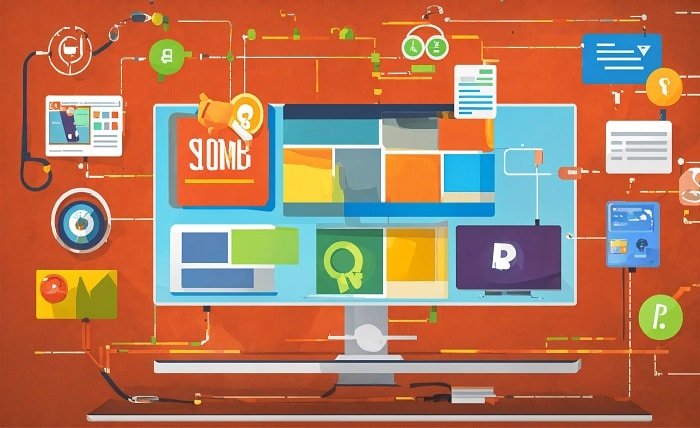The Ultimate Guide to App Development: From Concept to Launch

Introduction
In today’s digital era, app development has become a critical component of business strategy and personal innovation. Whether you’re developing an app for iOS, Android, or any other platform, the process involves several stages, each with its own set of challenges and requirements. This guide aims to demystify app development, offering insights and practical advice to help you navigate from concept to launch successfully.
The Basics of App Development
App development is the process of creating software applications for mobile devices and desktops. It encompasses a variety of tasks, including designing the app’s user interface, coding, integrating various technologies, and testing. The main goal is to develop an app that meets users’ needs and performs reliably.
Defining Your App’s Purpose and Goals
Before diving into the technical aspects of app development, it’s crucial to clearly define your app’s purpose and goals. What problem does your app solve? Who is your target audience? Answering these questions will guide the entire app development process and help you stay focused on delivering value to your users.
Market Research and Competitive Analysis
Conducting thorough market research is a vital step in app development. Analyze existing apps in your niche to understand their strengths and weaknesses. This will help you identify opportunities to differentiate your app and offer unique features that attract users. Understanding your competition is key to positioning your app effectively in the market.
Planning and Wireframing
Planning is a crucial phase in app development. Create detailed wireframes that outline the app’s layout and functionality. Wireframes act as a visual guide, helping you and your development team understand the user flow and interactions. This step ensures that the app’s design aligns with user expectations and business goals.
Choosing the Right Technology Stack
Selecting the appropriate technology stack is fundamental in app development. Depending on your app’s requirements, you might choose native development (iOS/Swift, Android/Java), cross-platform development (React Native, Flutter), or web-based solutions (HTML5, CSS3, JavaScript). Each option has its own advantages and considerations.
Design and User Experience (UX)
A well-designed app with a seamless user experience is crucial for success. During the app development process, focus on creating an intuitive and aesthetically pleasing interface. Pay attention to navigation, usability, and accessibility. A positive UX can significantly enhance user satisfaction and retention.
Development and Coding
This stage involves the actual coding and implementation of your app. Depending on your chosen technology stack, you’ll use various programming languages and frameworks. Effective app development requires collaboration between front-end and back-end developers to ensure that all features function as intended and the app performs smoothly.
Testing and Quality Assurance
Testing is an integral part of app development. Conduct thorough testing to identify and fix bugs, ensure compatibility across devices and operating systems, and verify that the app meets its requirements. Quality assurance helps maintain a high standard of performance and reliability, which is crucial for user trust and satisfaction.
Deployment and Launch
Once your app has passed all testing phases, it’s time to prepare for deployment. This involves submitting your app to app stores (like the Apple App Store and Google Play) and ensuring it meets all guidelines and requirements. Effective app development includes a well-planned launch strategy to maximize visibility and user acquisition.
Post-Launch Maintenance and Updates
App development doesn’t end at launch. Continuous maintenance and updates are essential to keep your app relevant and functional. Monitor user feedback, fix any emerging issues, and periodically release updates to improve features and performance. This ongoing process ensures long-term success and user engagement.
Conclusion
App development is a multifaceted process that requires careful planning, execution, and maintenance. By understanding the fundamental steps and best practices, you can create an app that not only meets user needs but also stands out in a competitive market. Remember, the key to successful app development lies in continuous learning and adaptation to new technologies and user preferences.
FAQs
1. What are the essential skills required for app development?
- App development requires a mix of technical skills, including programming (e.g., Java, Swift, JavaScript), UI/UX design, database management, and knowledge of development frameworks (e.g., React Native, Flutter). Problem-solving, creativity, and communication skills are also crucial.
2. How long does the app development process take?
- The timeline for app development varies depending on the complexity of the app, the resources available, and the development approach. On average, it can take anywhere from a few months to over a year to complete a fully functional app.
3. What is the difference between native and cross-platform app development?
- Native app development involves creating apps specifically for a single platform (iOS or Android) using platform-specific languages and tools. Cross-platform app development allows for building apps that can run on multiple platforms using a single codebase, such as React Native or Flutter.
4. How can I ensure my app’s security?
- Ensuring app security involves implementing best practices such as data encryption, secure authentication, regular security testing, and staying updated with the latest security patches and vulnerabilities. Prioritizing user data protection is crucial.
5. What are some common challenges in app development?
- Common challenges in app development include managing project timelines and budgets, ensuring compatibility across devices, maintaining performance and scalability, handling user feedback and updates, and keeping up with rapidly changing technology trends.





